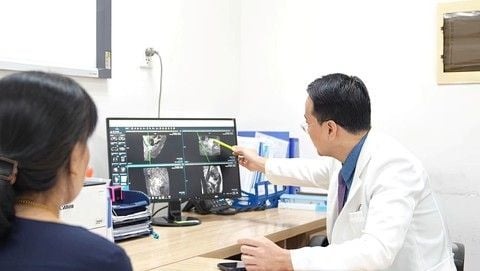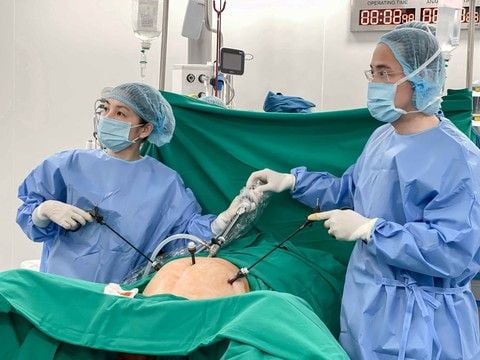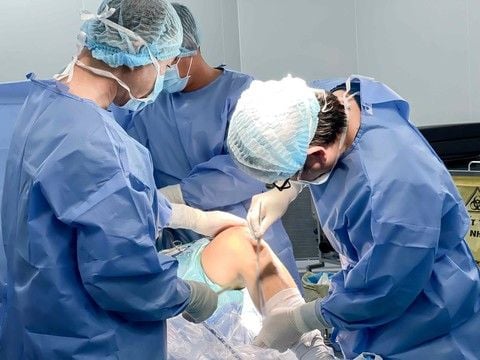1. The Onset, Progression, and Advancement of Cancer
Cancer results from uncontrolled cell division. Cancer cells divide when they are not supposed to, continue to divide when they should stop, and do not die when they should. In the worst-case scenario, cancer cells leave the area where they originated and spread to other parts of the body.
The development of cancer follows a multi-step process. As cells become increasingly abnormal, they gain new abilities, such as the capacity to release growth factors and digestive enzymes. These cells continue to divide, affecting nearby normal cells, often impairing the function of the affected organs. In some cases, the abnormal cancer cells die, but it can take years for a tumor to grow large enough to be felt.
Although not all cancers share the same symptoms, there are common characteristics shared during the development of many cancers. Many people are unaware of how long their cancer progresses or how long the incubation period is. Sometimes, by the time cancer is discovered, it may have been growing for a prolonged period, allowing cancer cells to spread quickly, which significantly impacts treatment effectiveness.
Cancer Research and Development Models
Initial experimental research on carcinogens was conducted on animals. Chemicals that could react with DNA and non-reactive compounds were tested for their carcinogenic potential. The model used involved applying carcinogens to mouse skin. Researchers observed the tumor development process by applying the chemicals and monitoring the outcome.
Researchers found that applying a DNA-reactive substance only led to tumor formation when animals were further treated with another non-reactive substance. A DNA-reactive compound that changes the genetic structure of cells is called a mutagen. Mutagens are used to create the conditions necessary for tumor cells to develop, and are called "initiators." Non-reactive compounds that stimulate tumor growth are called "promoters." About 70% of known mutations are also carcinogens—substances that can cause cancer. A compound that acts as both an initiator and a promoter is known as a "complete carcinogen," as tumor development can occur without the need for another compound.
1.1 The Onset of Cancer
Cancer begins from stage 0 and stage 1 of its development. Initiators, if not yet reacting with DNA, will undergo changes (usually becoming electrophiles) through metabolic enzymes in the body, potentially causing DNA mutations. Since many initiators need to be metabolized before they become active, they are often characteristic of specific tissues or species. The impact of initiators is irreversible; once a cell has been affected by an initiating agent, it will be prone to promotion until death. As the initiation results in permanent genetic changes, any offspring produced from the mutated cell will carry the mutation. In animal skin carcinogenesis studies, a linear relationship was observed between the dose of a promoter and the number of tumors that could be generated. Therefore, any exposure to the promoter increases the risk, with the risk rising indefinitely with higher exposure levels.
1.2 Cancer Promotion
Once a cell has been mutated by an initiator, it becomes more susceptible to the effects of promoters. These compounds stimulate cell proliferation, causing a large number of daughter cells that carry the mutations induced by the initiator. Promoters are ineffective unless the organism has been previously treated with the initiator. Unlike initiators, promoters do not covalently bind with DNA or other macromolecules in cells. Many promoters interact with receptors on the cell surface to influence intracellular pathways leading to cell proliferation. There are two common types of promoters: specific promoters that interact with receptors on or in target cells of certain tissues, and non-specific promoters that alter gene expression without the presence of known receptors. Promoters are often tissue- or species-specific due to their interactions with receptors that are present in varying amounts across different tissues.
Although the risk of tumor development from a promoter depends on dosage, there is both a threshold and a maximum effect for the promoter. Very low doses of a promoter will not lead to tumor development, and extremely high doses will not cause more risk than moderate exposure.
1.3 Cancer Progression
In mice, repeatedly applying a promoter to skin regions treated with an initiator results in the formation of benign papillomas. Most of these papillomas regress after treatment is stopped, but some progress to cancer. The frequency of this progression indicates that these papillomas have acquired an additional, spontaneous mutation. The term "progression," coined by Leslie Foulds, refers to the stepwise transformation of a benign tumor into cancer and malignancy. Progression is associated with karyotypic changes because almost all progressing tumors are aneuploid (having an incorrect number of chromosomes). This karyotypic alteration accompanies an increase in growth rate, invasiveness, metastasis, and biochemical and morphological changes.
2. Stages of Tumor Development
The development of a tumor from a single genetically altered cell is a stepwise process. The following process can apply to solid tumors like carcinomas or sarcomas. Blood cell tumors undergo a similar process, but because the cells float freely, they are not confined to one location in the body.
- Hyperplasia: The altered cell divides uncontrollably, resulting in an overabundance of cells in that tissue area. The cells appear normal, but there are too many of them.
- Dysplasia: Additional genetic changes in the hyperplastic cells lead to increasingly abnormal development. The cells and tissues no longer appear normal and may become disorganized.
- Carcinoma in situ: Further changes make the cells and tissues appear more abnormal. The cells now spread over a larger area, and the affected tissue mainly contains altered cells. These cells often "de-differentiate" or become more primitive in their functions. For example, liver cells may stop producing liver-specific proteins. This stage is still confined to the original site and has not invaded other tissues. These tumors can often be cured completely with surgery because all abnormal cells are localized.
- Malignant Cancer: These tumors can invade surrounding tissues and/or spread (metastasize) to areas outside the local tissue. Metastatic tumors are the most dangerous and account for a large proportion of cancer-related deaths. Some tumors do not progress to the point where they invade distant tissues and are considered benign. Although benign tumors do not spread beyond their initial location and are not considered cancerous, they can still cause significant health issues. Large benign tumors may apply pressure on organs and cause other complications. For example, a brain tumor in the confined space of the skull may be fatal due to the limited space in the cranial cavity.
3. How Long Does Cancer Incubate?
According to the Traditional Chinese Medicine Hospital in Yunnan, cancer is a race against time for the patient. The earlier cancer is detected, especially in stage 0 or stage 1, the higher the chances of successful treatment. However, many people are often careless or unaware of abnormalities in their body. Due to this neglect, they delay seeking medical help until the symptoms become unbearable, by which point the cancer may have progressed.
Under the influence of various carcinogens, the development of normal cells is disrupted, leading to abnormal proliferation, and cancer cells begin to appear. The transition from normal cells to cancer cells does not happen overnight. The incubation period typically lasts between 10 to 20 years between carcinogen exposure and the development of the disease.
The most concerning aspect is that in the early stages, cancer has no symptoms, silently multiplying cancer cells every day. During this time, even if the person visits a hospital for a checkup, the doctor may not detect anything unusual. A cancer cell will replicate for 20 cycles and reach 1 million cancer cells. However, when it enters the 30th cycle, it will reach 1 billion cancer cells, and only then will the tumor become detectable, with the tumor weighing around 1 gram.
Types of Cancer with Slow Development
Some cancers develop slowly, typically over 5 to 10 years, with subtle progression and often vague symptoms, leading to patients being unaware or misdiagnosing the condition. These include:
- Estrogen Receptor-positive (ER+) Breast Cancer and HER2-negative Breast Cancer: These types of breast cancer grow slowly and are often detected at early stages.
- Chronic Lymphocytic Leukemia (CLL): A type of blood cancer that progresses very slowly.
- Colorectal Cancer: Often develops slowly with minimal symptoms initially.
- Most Prostate Cancers: Many prostate cancers grow slowly and may not cause immediate problems.
Types of Cancer with Rapid Development
Some cancers are known to develop rapidly, and although they tend to grow quickly, they can still be treatable if detected early. These include:
- Acute Lymphoblastic Leukemia (ALL) and Acute Myelogenous Leukemia (AML): These forms of leukemia progress rapidly and need prompt treatment.
- Inflammatory Breast Cancer (IBC) and Triple-Negative Breast Cancer (TNBC): These types of breast cancer are aggressive and develop quickly.
- Large B-Cell Lymphoma: A form of non-Hodgkin lymphoma that progresses rapidly.
- Lung Cancer: Certain types, especially small-cell lung cancer, grow quickly.
- Rare Forms of Prostate Cancer, such as Small Cell Carcinoma.
4. Preventing Cancer Development
Preventing cancer development focuses on early interventions and lifestyle changes. Below are key preventive measures:
4.1. Avoid Smoking
Smoking increases the risk of various cancers, including lung, larynx, pancreatic, bladder, cervical, and kidney cancers. Second-hand smoke exposure also raises the risk of lung cancer. Therefore, avoiding tobacco use and second-hand smoke is a significant preventive step.
4.2. Maintain a Healthy Diet
Nutrition plays a vital role in overall health and can help prevent cancer. A healthy diet should include:
- Increased consumption of vegetables and fruits to provide essential vitamins and minerals.
- Limiting fried foods and items high in unhealthy fats.
- Eating low-salt foods to reduce the intake of sodium.
- Drinking plenty of water daily to stay hydrated.
4.3. Regular Physical Activity
Exercise plays a crucial role in weight management and the prevention of many types of cancer, including breast and colorectal cancers. Some beneficial activities include:
- Yoga, aerobics, and other forms of exercise.
- Walking at a moderate pace.
- Cycling.
4.4. Regular Health Check-ups
Early cancer detection is crucial for effective treatment and reducing complications. Regular health check-ups and cancer screenings can detect cancer early, even before symptoms appear. Regular screening lowers treatment costs and significantly reduces mortality rates.
It is recommended to undergo regular screenings and check-ups, such as monthly or quarterly health evaluations, to detect early-stage cancers. Many hospitals now offer automatic appointment systems through mobile applications for convenient scheduling.
By adopting these preventive measures, individuals can significantly reduce their risk of developing cancer and increase their chances of early detection and successful treatment.
Please dial HOTLINE for more information or register for an appointment HERE. Download MyVinmec app to make appointments faster and to manage your bookings easily.
References: cancerquest.org, msdmanuals.com
To arrange an appointment, please call HOTLINE or make your reservation directly HERE. You may also download the MyVinmec app to schedule appointments faster and manage your reservations more conveniently.








